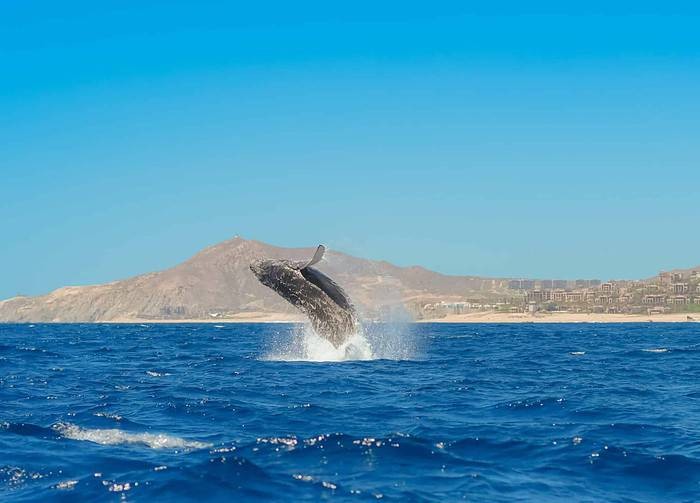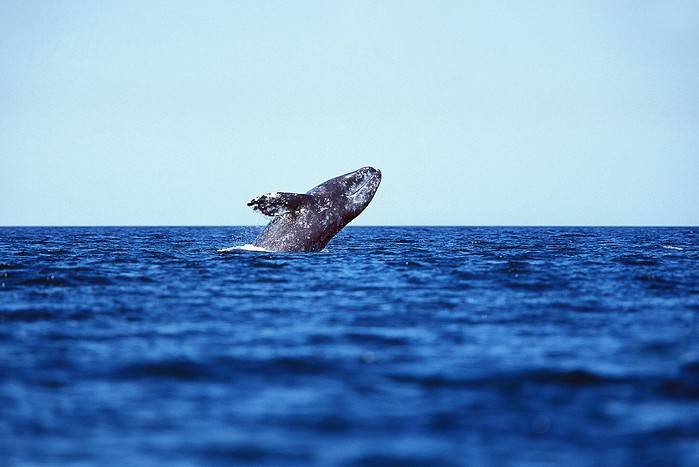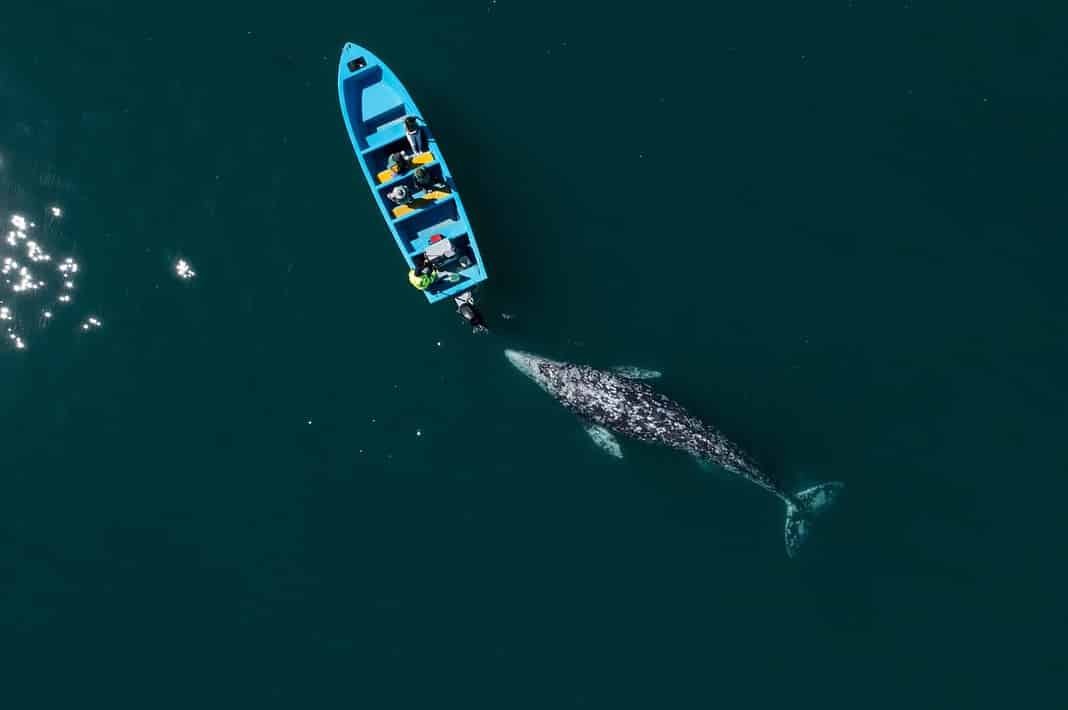Within our scuba and freediving community, it would be fair to say swimming with Whales is a bucket list experience for all. Who would not want to plunge into a beautiful clear blue ocean and experience the connection with these amazing animals?
The bucket list experience of a one-on-one encounter with a huge marine mammal is a “before I die” wish of most people on the planet, not just the privileged aquanauts and denizens of our ocean realm.
As the World’s consciousness shifts to avoiding the cruel and criminal activity of swimming with captive Dolphins, the desire to encounter marine mammals wild and free has grown.
There are a few destinations in the World where this activity is legal and sustainably managed; Tonga, French Polynesia, Sri Lanka, Dominican Republic, The Bahamas, and Dominica.
A thriving tourism business has evolved to ensure some degree of sustainability and, in many places, a reciprocal income ensuring the safety of both tourists and marine mammals.
Mexico has one of the greatest conservation stories of our lifetime. The success of Gray Whale watching has seen the Gray Whale go from being endangered to being “of least concern.” These efforts are to be applauded and much to an incredible collaboration between authorities and the ancestors of the original whale hunters living and working in the lagoons of Baja California Sur.
Unfortunately, Mexico is currently suffering from the spate of narcissistic influencers and opportunistic tourism operators working illegally to provide tourists with “the selfie experience” with the great whales that commute down Mexico’s Pacific coast of the Baja Peninsula.

Whale Watching Federal Law in Mexico
All the great whales are protected under Federal Law in Mexico, and swimming with them is illegal. Swimming with mother and calf even more so.
One law protecting the animals is the Whale Watching Regulations: NOM-131-SEMARNAT-2010. The law outlines the basic rules for whale watching from a boat only:
- Cause the minimum impact on the whales.
- Be patient.
- Only go whale watching with boats or companies with a whale watching permit.
- The minimum distance that should be kept from whales is 800 ft for boats without a whale-watching permit.
- Only a maximum number of 4 (four) boats can remain around the same whale or a group of whales.
- For authorized boats, the minimum observation distance between any boat and a whale, or group of whales, is 60 meters for small boats (less than 10 meters in length) and 80 meters for medium and larger boats (more than 10 meters in length).
- When whale watching, keeping a constant cruising speed with a maximum of 9 km/hr (5 mph, 5 knots) is imperative. In all cases cruising speed should be slower than the slowest whale in the group. Fast acceleration and deceleration should be avoided.
- Avoid drastic changes in speed and direction within 300 mt. (990 ft.) of the closest whale because this scares them and can cause a collision.
- If whales avoid you, change direction, breathing rhythm, or modify their activity, don’t approach them or move away slowly.
- The correct way to approach a whale is from its side and slightly from the back, never from the front or encircling them because this could threaten them.
- Mothers with calves are very sensitive, so it is essential to be extremely careful when approaching them.
- It’s forbidden to cause the dispersion of a group or to interrupt its activities.
- Activities such as swimming, snorkeling, sea kayaking, jet skiing, parachuting, or scuba diving shouldn’t be done in the area where whales are found. It could be dangerous and affect and change the natural behavior of the whales.
All the laws and guidelines are being abused for the one-time selfie or photo opportunity for social media.
Legal Whale watching in Baja California Sur, Mexico, is only allowed from a boat. Swimming with them is illegal.
Under what circumstances might this be allowed:
- The lucky encounter while diving or snorkeling and a whale happens to come to check you out – if you are on a boat and actively pursuing a whale to jump in the water with it, you are breaking the law
- You have a federal film permit connected to a large institution like the BBC or National Geographic
There are no such permits in Baja California Sur for tourism operators and no permits for collaboration with institutions studying these animals.

Whale Watching in Mexico – What to Consider
What are the take-home messages for anyone seeing this activity or thinking of coming to Mexico to “swim with whales”?
- Go with a licensed “Whale Watching” company – they should have permits and strictly forbid the activity of swimming with whales.
- Do not believe any company that claims to have a permit for swimming with whales – they do not exist.
- Ask the individuals promoting the activity for their immigration status in Mexico – most are opportunistic foreigners with no registered business and paying no taxes in Mexico.
- Ask about their infrastructure – if all they can provide is an Instagram account – avoid them.
- When they claim to be a Marine Biologist working with Whales, ask them what papers they have written on Whale behavior and with what institution.
This activity has become such a problem here in Baja that it will soon start to harm the Whale population, not just the potential injury to a snorkeler.
The Whales of Baja are migrating, unlike Tonga, Dominica, and other locations. Interactions with animals in Tonga are based on animals that have already safely arrived at a breeding or feeding destination. This differs from interrupting an animal’s progress and safe migration to a destination. This is especially true for San Carlos, Mag Bay, and La Ventana.
The very fact that some tour guides claim to be Marine Biologists discredits their studies. All the biologists working and studying great whale behavior in Mexico state interrupting the migration patterns of these animals is potentially bad for the animals, especially mothers and calves. Disrupting their migration and the energy needed to arrive at a safe destination.
Sadly Mexican authorities need to be focusing on illegal fishing and poaching. Illegal tourism activities are not a high priority outside of protected areas. A lack of vigilance and ignorance on the part of tourists perpetuates the issue.
For the moment, the authorities and researchers do not see any viable plan for regulating the activity of swimming with Whales in Baja California Sur. The activity needs to evolve, and the priority should be the safety of the animals. For the moment, do not swim with Whales in Baja California Sur.

